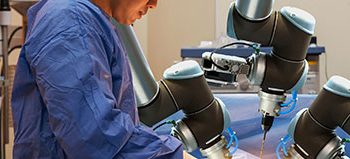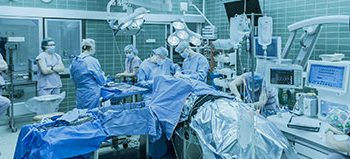The global defibrillator market is poised for significant growth, with a projected CAGR of 5.9%, expected to reach USD 18.1 billion by 2028 from USD 13.6 billion in 2023. Several key factors are driving this remarkable expansion, including the increasing incidence of cardiac arrest among patients with cardiovascular diseases worldwide, government and private organizations’ initiatives to enhance public access to defibrillators during cardiac emergencies, and a rise in defibrillator training and awareness programs. Ongoing innovations in Subcutaneous Implantable Cardioverter-Defibrillators (S-ICDs), MRI-compatible ICDs, and CRT-Ds, coupled with improving healthcare infrastructure in emerging nations, are also contributing to the market’s growth.
Download PDF Brochure: https://www.marketsandmarkets.com/pdfdownloadNew.asp?id=549
Implantable Cardioverter-Defibrillator (ICDs) Dominance: In the world of defibrillators, the Implantable Cardioverter-Defibrillator (ICDs) segment stands as the frontrunner, expected to hold the largest market share in 2022. This programmed device offers a critical advantage with timely intervention during cardiac emergencies. The growing approvals of technologically advanced implantable defibrillators and the increasing preference for subcutaneous ICDs are further propelling the growth of this segment.
Hospitals, Clinics, and Cardiac Centers Lead the Way: Among end users, the hospitals, clinics, and cardiac centers segment is set to dominate the defibrillator market in 2022. The increasing hospitalizations for critical cardiac conditions, a surge in ICD and CRT-D implant procedures performed in hospitals and cardiac centers, and the rising prevalence of cardiac diseases among the elderly are key factors driving the demand for defibrillators in this segment.
North America’s Stronghold: The North American region is at the forefront of the global aed market, driven by the rapid adoption of technologically advanced defibrillators, favorable reimbursement policies, and the strong presence of defibrillator manufacturers heavily invested in R&D and new product development. Meanwhile, the Asia Pacific region is expected to witness the highest CAGR, attributed to a large patient pool, government initiatives to modernize healthcare infrastructure, and the expansion of market players in the region.
Key Players Shaping the Market: The defibrillator market is dominated by global players, with major companies such as Medtronic, Stryker, Koninklijke Philips, Asahi Kasei Corporation, Boston Scientific Corporation, and Abbott leading the way. These industry leaders are employing various strategies like product launches, contracts, partnerships, mergers, acquisitions, and new product development to expand their presence in the aed market. For example, Medtronic is a front-runner due to its extensive product portfolio, with a focus on innovative products to treat and manage heart failure and rhythm disorders. The company’s recent CE Mark for its implantable defibrillator system demonstrates its commitment to advancing healthcare technology.
Internal Cardiac Defibrillator: Internal Cardiac Defibrillators (ICDs) are advanced implantable devices used to monitor and regulate heart rhythms, particularly in patients at risk of life-threatening arrhythmias. These devices provide a two-fold benefit: they can act as pacemakers to regulate slow heart rhythms, and they can deliver electrical shocks to restore normal rhythms during ventricular fibrillation or ventricular tachycardia. The ICD market has witnessed significant growth due to the increasing prevalence of arrhythmias and a growing emphasis on preventive cardiology. These remarkable devices have become a lifeline for patients with heart conditions.
Atrial Defib Market: The Atrial Fibrillation (AFib) market, often referred to as the Atrial Defibrillation market, is dedicated to addressing irregular heartbeats specifically in the atria. AFib is a common arrhythmia characterized by rapid and irregular heartbeats, and it can increase the risk of strokes and other heart-related complications. To manage and treat AFib, various medical devices and procedures, including atrial defibrillation, have been developed. The atrial defib market is driven by the growing prevalence of AFib, which underscores the importance of effective treatment options for this condition.
Ventricular Defibrillator: Ventricular defibrillators are a subset of implantable cardiac devices designed to treat life-threatening ventricular arrhythmias, particularly ventricular fibrillation and ventricular tachycardia. These devices monitor the heart’s electrical activity and can deliver electrical shocks to restore normal rhythms when necessary. The ventricular defibrillator market plays a pivotal role in the management of patients with a high risk of sudden cardiac arrest. It’s a testament to the relentless pursuit of technological advancements in the field of cardiology, enhancing patient outcomes and saving lives.
Request Free Sample Pages: https://www.marketsandmarkets.com/requestsampleNew.asp?id=549
Conclusion: The dental equipment market, which encompasses dental supplies, instruments, handpieces, and dental chairs, is experiencing remarkable growth. With diverse segments, key end-users, and regional dynamics, this industry presents a promising future. As we move forward, it’s crucial for stakeholders to stay updated with the latest trends and innovations, ensuring that the dental equipment market continues to thrive and promote oral health on a global scale.
Contact:
Mr. Aashish Mehra
MarketsandMarkets™ INC.
630 Dundee Road
Suite 430
Northbrook, IL 60062
USA : 1-888-600-6441
sales@marketsandmarkets.com


